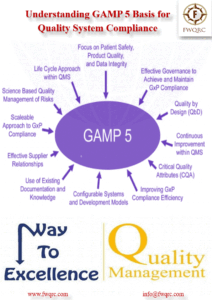Special provisions are made for temperature and environment control, computerised systems as well as for qualification and validation
According to Chapter 3 (Premises and Equipment) of the EU GDP Guidelines (Guidelines of 5 November 2013 on Good Distribution Practice of medicinal products for human use – 2013/C 343/01) “wholesale distributors must have suitable and adequate premises, installations and equipment, so as to ensure proper storage and distribution of medicinal products”.
The following checklist provides a generic overview and could be used as a minimum requirement related to Chapter 3 of the 2013 guidelines:
Outsourcing activities
- A contract is in place where premises are not directly operated by the wholesale distributor and the premises are covered by a wholesale distribution authorization.
Layout of premises
- Unauthorised access to all areas of the authorised premises is prevented
- Receiving and dispatch bays protect products from prevailing weather conditions e.g. roller shutter door, curtains
- Segregated areas are designated for the storage of any
– product suspected of falsification
– returned product
– rejected product
– product awaiting disposal
– recalled product and medicinal products not intended for the EU market - Radioactive materials other hazardous products and products presenting special risks of fire or explosion are stored in a dedicated
area(s) with appropriate safety and security measures - There is adequate separation between the receipt and dispatch areas and storage areas
- Rest, wash and refreshment rooms for employees are adequately separated from the storage areas
Hygiene
- Procedures relating to personnel hygiene like health, hygiene and clothing are established and observed
- Storage of food, drink, smoking materials or medication for personal use in the storage areas is prohibited
- Cleaning instructions and records are in place
- Cleaning records are in use and up to date, reviewed regularly by the RP and signed by staff
- Actions highlighted during cleaning are completed and/or referred to management where required
- Premises and storage facilities are clean and free from litter and dust
- Facilities are designed and equipped so as to afford protection against the entry of insects, rodents or other animals
- A preventive pest control programme is in place
Temperature and Environment Control
- Suitable equipment and procedures are in place to ensure adequate control of the environment
- Storage areas are temperature mapped.
- Temperature monitoring equipment is located according to the results of the mapping exercise
- Controls are adequate to maintain all parts of the relevant storage area within defined temperature, humidity or light parameters
- Equipment used to control or to monitor the environment, are calibrated and their correct operation and suitability is verified at defined intervals by the appropriate methodology
- Appropriate alarm systems are in place to provide alerts when there are deviations from pre defined storage conditions
- Alarm levels are appropriately set
- Alarms are regularly tested and temperature monitoring readings are regularly reviewed
Equipment
- Planned preventive maintenance is in place for key equipment
- Calibration of equipment is traceable to a primary standard
- Adequate records of repair, maintenance and calibration activities for key equipment is made and the results are retained
- Extent of validation and qualification activities are determined by a documented risk assessment approach and are documented in a plan
- Systems are validated/qualified prior to implementation and after any significant changes or upgrades to ensure correct installation and operation
- Evidence of satisfactory validation/qualification and acceptance of a process or piece of equipment is produced and approved by appropriate personnel
- Requalification following repair or maintenance is considered dependent on the scope of the changes made. Such decisions are justified utilizing a risk-based approach.
Computer Systems
- Detailed written descriptions of the systems are available (describing the principles, objectives, security measures and scope of the system and the main features, how the computerized system is used and the way it interacts with other systems)
- Data is entered into the computerised system or amended only by persons authorised to do so
- Data is secured by physical or electronic means against willful or accidental damage
- Data is protected by backing up at regular intervals
- Back up data is stored for a period stated in national legislation but at least 5 years at a separate, secure location
If you would like to receive notifications on recent regulatory guidance, please write to info@fwqrc.com





